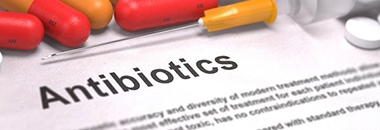HEPA能过滤COVID-19新冠病毒吗?
2020-06-24
博客
A CDC microscopic image of the COVID-19 virus.
显微镜下的COVID-19新冠病毒

The short answer is we don’t have any direct research to verify if a HEPA air purifier reduces transmission of COVID-19 however, according to Professor Jeffrey Siegel at the University of Toronto, “we can infer from what we know for similar viruses, like SARS, there is reason to think air purifiers might help in some situations.”
简单的答案是,我们没有任何直接的研究来验证HEPA可以减少COVID-19的传播。然而,多伦多大学的杰弗里·西格尔教授说,“我们可以从我们所知道的类似病毒,像“非典”病毒,我们有理由相信空气净化器在某些情况下是有效的。”

How many microns in size is the COVID-19 virus?
The COVID-19 virus is approximately 0.125 Micron or 125 nanometers in diameter. (Source: National Library of Medicine).
However, it often travels in biological aerosols from coughing and sneezing which range in size from 0.5-3 Micron.
COVID-19新冠病毒的直径有多大?
COVID-19新冠病毒的直径大约为0.125微米即125纳米(来源:美国国家医学图书馆)。
然而,它经常通过咳嗽和打喷嚏产生的生物气溶胶传播,大小在0.5-3微米之间。

How does HEPA filtration work?
HEPA stands for High Efficiency Particulate Air and is a filtration rating that captures microbes, dust, and particulates down to 0.3 Micron.
But what does that really mean and how do they work?
The U.S. Department of Energy first termed HEPA as a filtering specification for suppliers of filtration products based on how effective they were at particle removal.
HEPA filters consist of a complicated mix of filaments and fibers that carry a static charge which lures various microbes and particles like a magnet.
While the particles travel through the air filtration system, they’re captured and retained within the filter. Additionally, an interesting scientific effect occurs known as Brownian Motion which causes particles in certain media states (such as fluid) to bounce around and become trapped.
HEPA(高效过滤器)如何工作?
HEPA是高效空气过滤的缩写,是一个过滤等级,可以捕获小至0.3微米的微生物、灰尘和微粒。
但这到底意味着什么,它们是如何工作的呢?
美国能源部首先将HEPA作为过滤产品供应商的过滤规范,其依据是过滤产品在微粒去除方面的效率。
高效空气过滤器由一种复杂的纤维和细丝混合而成,带有静电电荷,像磁铁一样吸引各种微生物和粒子。
当微粒通过空气过滤系统时,它们被捕获并保留在过滤器内。此外,一种有趣的科学效应被称为布朗运动,它导致某些介质状态(如流体)中的粒子四处反弹并被困住。

How do N95 or KN95 face masks compare to HEPA air purifiers?
You may see or hear about people wearing surgical masks or N95 or KN95 rated masks to prevent themselves and others from being exposed to Covid-19. One important thing to note is that these masks are not as effective as HEPA air purifier systems which is more efficient than KN95/N95.
N95 or KN95 face masks capture 95% of particles down to 0.3 micron. This means that 5% still get through the protection. HEPA air purifiers in contrast are 99.97% effective at 0.3 Micron and are much more efficient than face masks.
N95或KN95口罩与HEPA高效空气过滤器比较如何?
你可能看到或听说有人戴医用口罩或N95或KN95等级口罩,以防止自己和他人暴露于Covid-19新冠病毒之下。需要注意的一件重要的事情是,这些口罩不如HEPA高效空气过滤器有效,后者比KN95/N95更有效。
N95或KN95口罩能捕捉95%的微粒,微粒大小为0.3微米。这意味着仍有5%的微粒没有被有效过滤。相比之下,高效空气过滤器在0.3微米时的过滤效率为99.97%,比口罩的效率高得多。

What is the difference between MERV and HEPA filters?
You may have heard the term “MERV” before. It stands for Minimum Efficiency Reporting Value and is a rating system for HVAC air filters created by the American Society of Heating, Refrigerating, and Air Conditioning Engineers or (ASHRAE).
Many people are asking the question, “can I use a MERV filter in a mask”?
While there have been no scientific studies we could find for this, the answer is likely no.
Here’s why…
MERV stands for Minimum Efficiency Reporting Values, or MERVs, report a filter’s ability to capture larger particles between 0.3 and 10 microns (µm). (Per the EPA)
HEPA and MERV filters are usually not the same. MERV rated filters are typically used in air conditioning systems, including systems found in most homes.
MERV filters have a rating system… MERV 7, 8, 10, and so on—up to MERV 20.
MERV filters are not effective at filtering microbes and viruses until they are rated at 17 or better.
MERV(最低效率报告值)和HEPA(高效空气过滤)过滤器有什么区别?
你可能听说过“MERV”这个词。它代表了最低效率报告值,是由美国供暖、制冷和空调工程师协会(ASHRAE)创建的HVAC空气过滤器评级系统。
很多人都在问这个问题,“我可以在口罩中使用MERV过滤器吗?”
虽然我们还没有找到相关的科学研究,但答案很可能是否定的。
这是为什么…

MERV代表最小效率报告值,或MERVs,报告过滤器捕捉0.3-10微米(中值m)大颗粒的能力。
HEPA和MERV过滤器通常不一样。MERV过滤器通常用于空调系统,包括大多数家庭使用的系统。
MERV过滤器有一个评级系统…MERV 7, 8, 10,等等,直到MERV 20。
MERV过滤器在过滤微生物和病毒时,只有当它们被评为17或17以上时才会有效。
What is the difference between N95 and KN95 face masks?
N95 face masks are examples of personal protective equipment, or PPE, that are used to protect the wearer from airborne particles and liquid contaminating the face.
They are regulated by the FDA and NIOSH (U.S. National Institute for Occupational Safety and Health). The N is for “Not resistant to oil” and the 95 refers to the minimal is efficiency level at 0.3 microns (of which is it 95% efficient).
Similarly, KN95 masks are also a form of PPE used to protect the wearer from similar hazards though they are not regulated by NIOSH. These masks are often identical to N95 masks and are the “N95 equivalent” for medical usage in China.
In the US, they are primarily used in industrial settings and offer the same filtration as N95 face masks with a rating of 95% at 0.3 Micron. In fact, these masks are often produced from the same assembly line as N95 masks however are not sent for NIOSH regulation.
On April 3rd of this year, the FDA approved the use of KN95 masks for healthcare professionals in an effort to increase the available PPE face masks and lower the spread of the COVID-19.
N95和KN95口罩有什么区别?
N95口罩是常见的个人防护装备(PPE),用于保护佩戴者免受空气中的微粒和液体污染面部。
它们由FDA和NIOSH(美国国家职业安全和健康研究所)监管。N表示“不耐油”,95表示在0.3微米时的最低效率水平(95%的效率)。
同样,KN95口罩也是PPE的一种形式,用于保护穿戴者免受类似的危害,尽管它们没有NIOSH的规定。这些口罩通常与N95口罩相同,是中国医用的“N95等效物”。
在美国,KN95主要用于工业场合,并提供与N95口罩相同的过滤功能,在0.3微米的评分为95%。事实上,这些口罩通常是由生产N95口罩的同一生产线生产的,但KN95没有发送NIOSH进行标准认证。
今年4月3日,FDA批准医疗专业人员使用KN95口罩,以努力增加防护口罩的可用性,并降低COVID-19的传播。

How do viruses like COVID-19 spread through the air?
By nature, viruses are sub-micron in size-we’re talking 500nm (0.5 micron) and below. Not to mention viruses only require a small amount to enter your body in order to start an infection.
The sad truth is that some viruses will inevitably pass through any HEPA filter.
Here’s why…
Typically, viruses like COVID-19 or even H1N1 are spread through the air via biological aerosols. These tiny moisture droplets are expelled whenever you sneeze, cough, or go ACHEW!
They carry bacteria and viruses through the air and ultimately your respiratory system.
Overtime, with enough volume or use, particles will eventually separate and penetrate the filter due to their sub-micron size.
像COVID-19新冠病毒是如何通过空气传播的?
病毒的大小是亚微米级别——我们说的是500纳米(0.5微米)及以下。病毒只需要少量进入你的身体就会引起感染。
令人悲哀的事实是,一些病毒将不可避免地通过任何HEPA过滤器。
这是为什么…
通常,像COVID-19甚至H1N1这样的病毒是通过生物气溶胶在空气中传播的。当你打喷嚏、咳嗽或疼痛时,这些微小的飞沫就会被排出。
这些飞沫携带着细菌和病毒通过空气,最终到达你的呼吸系统。
随着时间的推移,当过滤器里病毒积累到一定数量或过滤器过度使用后,粒子最终会因其亚微米大小而分离并穿透过滤器。

How can a HEPA air purifier help lower the spread of the COVID-19 virus?
Research studies have been conducted to test the efficacy of HEPA filtration on moisture droplets containing viruses. Most biological aerosols range in sizes from 0.5-3 micron. HEPA air purifiers, captures aerosol particles in that size range.
On paper, it is impossible for any HEPA filter to be 100% effective since many microbes are less than 0.03 micron in size—but that’s in an isolated form where they typically can’t survive long.
Plus, research is still being done on the subject.
An interesting study performed by NASA indicated that HEPA filters were able to capture sub-micron particulate down to 0.1 micron!
Additionally, all testing is performed using brand new filters. HEPA filters actually work better the “dirtier” they get (up to the point where airflow is restricted).
HEPA高效空气过滤器如何帮助降低COVID-19病毒的传播?
对高效空气过滤对含病毒微粒过滤的效果进行了研究。大多数生物气溶胶的大小在0.5-3微米之间。HEPA高效空气过滤器,捕获该大小范围内的气溶胶颗粒。
研究发现,任何高效空气过滤器都不可能100%有效,因为许多微生物的直径小于0.03微米——但这是微生物独立个体存在时的尺寸,这种形式存在时它们通常不能存活很长时间。
另外,关于这个课题的研究还在进行中。
美国宇航局进行的一项有趣的研究表明,高效空气过滤器能够捕捉到0.1微米以下的亚微米微粒!
此外,所有测试都使用全新的过滤器执行。高效空气过滤器实际上工作得越好就“越脏”(直到气流受到限制)。

Not only can HEPA air purifiers capture viruses, but they also create a cleaner work area in general.
If you work in an area with potential airborne hazards or particles, then the HEPA air purifier is an excellent piece of equipment to promote better air quality and health.
But please keep this in mind, a HEPA air purifier is not an end all solution. It can only filter particles it captures-many airborne particles can still be present in the air and land of surfaces or travel around before getting captured by an air purifier.
This is why proper disinfecting procedures are required, wearing masks, gloves, and following procedures to regularly disinfect are all key factors in reducing the spread of any contagion.
高效空气滤过器不仅可以捕捉病毒,还可以创造一个更清洁的工作区域。
如果你工作的空间有潜在的空气危害或微粒危害,那么高效空气滤过器是一个很好的设备,提高空气质量,为健康保驾护航。
但请记住,HEPA高效空气过滤器不是解决所有问题的办法。它只能过滤捕捉到的微粒——许多空气中的微粒在被高效空气过滤器捕获之前仍然存在于空气和地面表面或四处传播。
这就是为什么需要采取其它适当防护措施如消毒,戴口罩、戴手套和遵循定期消毒是减少任何传染病传播的关键因素。
分享文章
标签
最新消息

创新性策略应对伦敦国王学院医院中产碳青霉烯酶肠杆菌科细菌(CPE)问题
伦敦国王学院医院NHS基金会信托基金作为伦敦最大且最繁忙的教学医院之一,在面临产碳青霉烯酶肠杆菌科细菌(CPE)爆发问题时遭...

